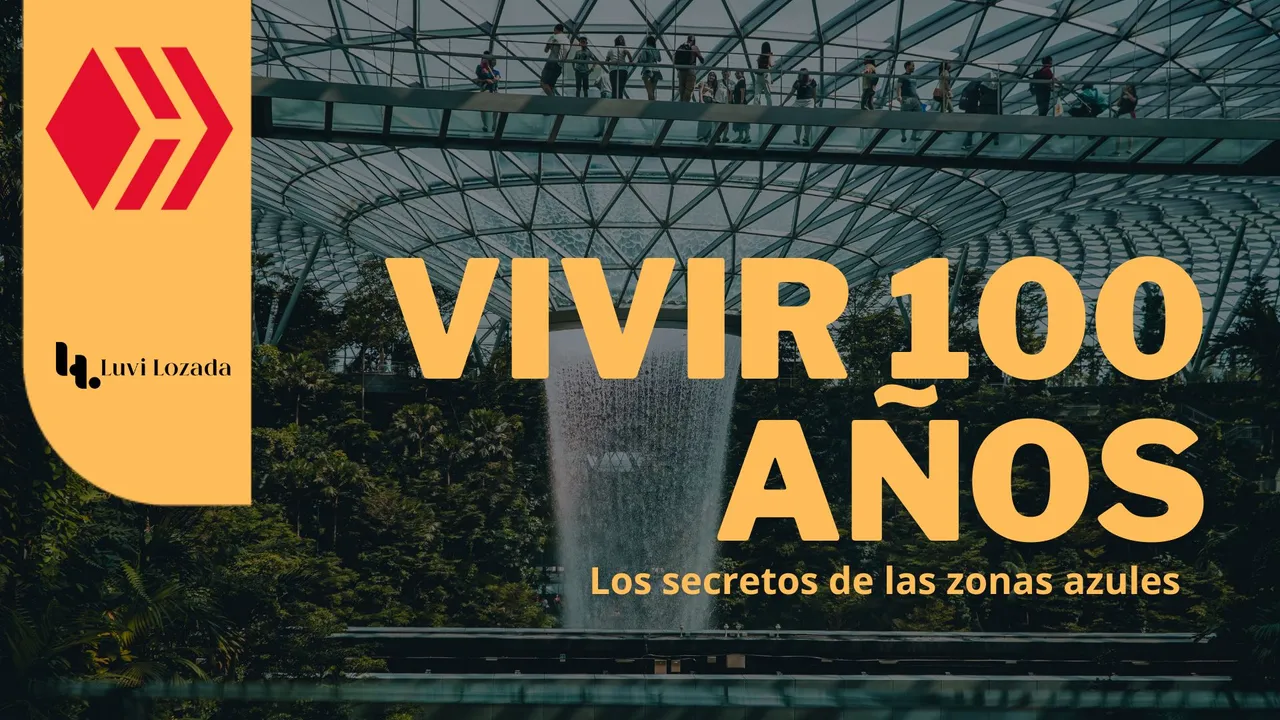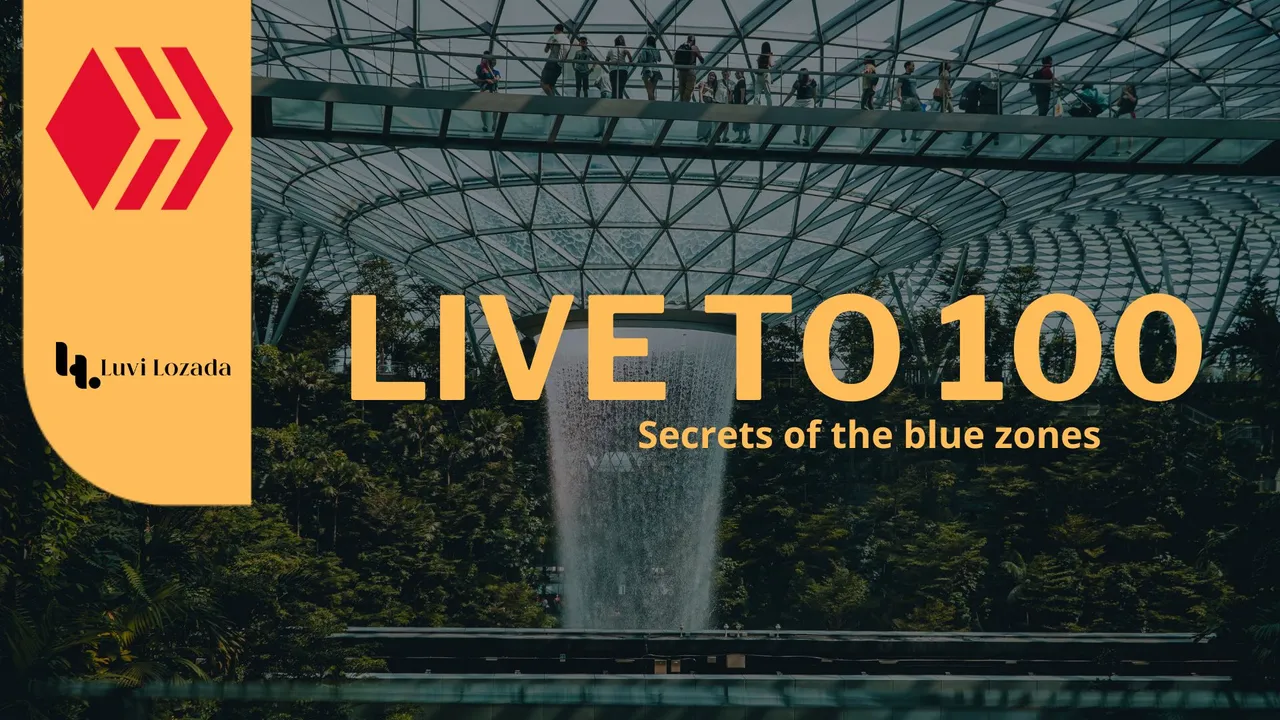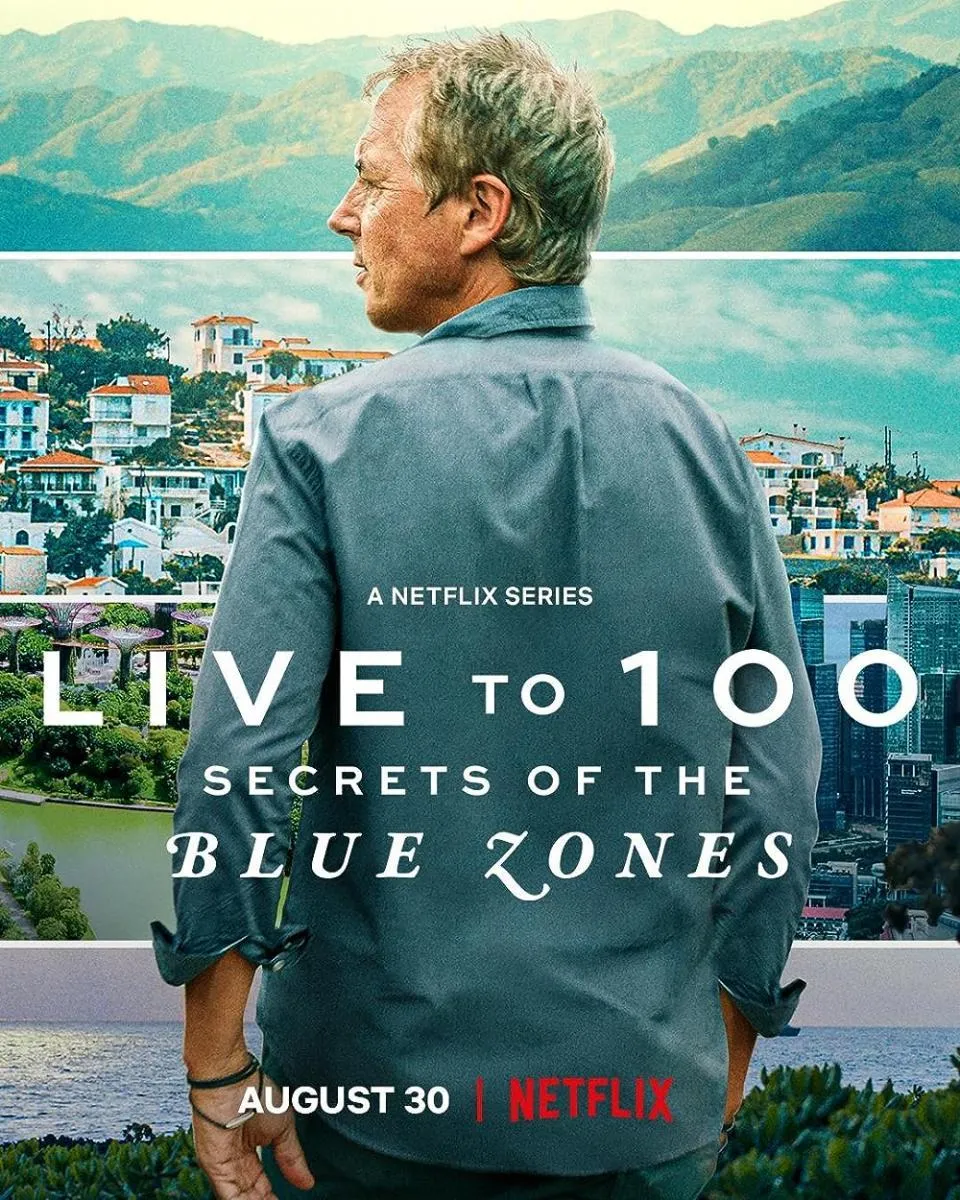
Español
El año pasado pude ver una miniserie documental en Neflix, titulada: “Vivir 100 años”, te aseguro que, si te gustan las prácticas saludables, los viajes y las historias te gustará tanto como a mí, me encargué de recomendarla a mucha gente y hoy quiero dejar mis reflexiones en esta grandiosa comunidad.
Honestamente, cuando vi la portada de esta miniserie en la cartelera de Neflix, pensé que se trataba de un documental más, explicando el daño de los alimentos en nuestras vidas, sin embargo, superó mis expectativas, porque involucra otros elementos que también son necesarios para vivir una vida mejor.
Este documental, registra una investigación sobre las conocidas zonas azules, localizadas en 5 distintos puntos del planeta donde viven personas longevas y a través de un gran viaje buscan identificar prácticas cotidianas que resultan comunes y ayudan a mantener o mejorar la forma en que vivimos, desde una perspectiva integral y complementaria, porque involucra muchas dimensiones de la vida humana (mente, cuerpo, relaciones sociales, familia, entre otros).
¿Quién la realizó?
Dirección de Clay Jeter, ha realizado generalmente series de televisión y ha participado en películas como IO, según lo que pude leer. En esta oportunidad durante la serie, Dan Buettner es el investigador, un estadounidense, quien se ha dedicado a investigar alrededor de 20 años sobre las zonas azules, es autor de varios libros y fundó la organización Blue Zones en su país natal, gran parte de su trayectoria podrás verla durante los capítulos. Otras de las cosas interesantes, es el reto que se propuso en indagar, si es posible replicar en ciudades, “la sabiduría de las zonas azules” que involucre esas claves que resultaron de sus investigaciones.
¿En qué consiste?
Esta miniserie involucra 4 capítulos entre 34 y 45 minutos, así que te la devorarás como yo lo hice durante un día, porque es muy interesante. El primer capítulo se titula: Comienza el viaje en Okinawa, Japón; 2. Un descubrimiento inesperado en Cerdeña hasta california; 3. ¿El fin de las zonas azules?, visita la isla griega de Icaria y la península de Nicoya en Costa Rica; Y 4. El futuro de la longevidad, el equipo llega a Singapur y luego finaliza en Estados Unidos, lo cual te genera muchas dudas, porque se trata de una metrópolis donde abunda el hiperconsumo y tienen datos históricos de una alta tasa de sobrepeso, pero te sorprenderá ver algunas experiencias interesantes que dejan una gran experiencia y herramientas que pueden ser útiles para proporcionar oportunidades para vivir mejor, lo cual es un compromiso colaborativo.
Aprender a Vivir
Este material trasciende un simple consejo de dietas saludables, ejercicio físico o fijar metas personales, por una investigación muy completa que incorpora una perspectiva personal y social. A medida que conoces las experiencias, te darás cuenta que la intención es brindar herramientas para aprender a vivir de una forma distinta, divertida y feliz, entendiendo que la felicidad es subjetiva, pero es vista más como un camino por donde transitar.
Si algo me encantó de la serie, es como cada capítulo se entrelaza, aún cuando las prácticas son muy propias de cada lugar, nos ofrece una mirada al pasado hacia el rescate de costumbres alimentarias tradicionales, que, si bien depende de patrones culturales en la familia, mientras haya buen diseño y aplicación de políticas públicas y sociales que promuevan oportunidades para vivir una vida mejor, se puede transformar vidas desde el entorno.
Por ejemplo, me encantó las medidas que tomaron en Singapur para ayudar a que la gente tenga mejores opciones de comida, tal como afirma Buettner: “buscando que la opción saludable, sea la única opción”, esto ayuda a combatir enfermedades comprometedoras en la población, cómo fomentar las relaciones sociales, vínculos y mejorar el entorno, allí radica la clave.
A veces siento que el mundo está perdido, pero cuando me encuentro con buenas noticias, investigaciones o materiales como "Vivir 100 años", me permite sentir esperanzas, así que sentirás que te renuevas y dices: ¡wow hay un horizonte!, porque no es ficción sino una sistematización de historias de vidas en las que sonreirás de admiración e ilusión con las personas que presentarán en cada capítulo.
Particularmente, me encantó las claves que se resumen de toda la investigación, notarás como se integran hábitos y acciones cotidianas tan sencillas, para comenzar a practicar una vida diferente.
Esta miniserie es muy útil tanto para cualquier persona, comunidades, políticos, urbanistas, trabajadores sociales, psicólogos, médicos, entre otros, nos da la posibilidad de hacer nuestra parte desde donde estemos.
Realización
Sobre el trabajo realizado en la serie aunque es de tipo documental obviamente, me parece desde mi corto conocimiento que está muy bien elaborada con talla cinematográfica por la composición sutil que usan, los movimientos de cámara, los planos flexibles que van desde lo abierto a unos más cerrados, hay fotografías muy variadas de los paisajes en el mundo y rostro de las personas, que combinada con la voz en off, te adentra en cada capítulo, historia y genera emociones muy bonitas, así que tiene contenido relevante y calidad estética.
Espero puedas verlas y si ya la viste comenta que fue lo que más te gustó de los 4 capítulos.

English
Last year I was able to watch a documentary mini-series on Netflix, titled "Living 100 Years". I assure you that if you like healthy practices, travel, and stories, you will enjoy it as much as I did. I took it upon myself to recommend it to many people, and today I want to share my reflections with this great community.
Honestly, when I saw the cover of this mini-series on the Netflix lineup, I thought it was just another documentary explaining the harm of food in our lives. However, it exceeded my expectations because it involves other elements that are also necessary for living a better life.
This documentary records an investigation into the well-known blue zones located in 5 different points of the planet where long-lived people live. Through a great journey, they seek to identify everyday practices that are common and help maintain or improve the way we live, from a holistic and complementary perspective, because it involves many dimensions of human life (mind, body, social relationships, family, among others).
Who made it?
Directed by Clay Jeter, he has generally done television series and has participated in films such as IO, according to what I could read. In this opportunity during the series, Dan Buettner is the researcher, an American, who has been dedicated to investigate about 20 years about the blue zones, he is the author of several books and founded the Blue Zones organization in his native country, much of his career you can see during the chapters. Another of the interesting things is the challenge he set himself to find out if it is possible to replicate in cities, "the wisdom of the blue zones" that involves those keys that resulted from his research.
What is it about?
This miniseries involves 4 episodes between 34 and 45 minutes, so you will devour it like I did in one day, because it's very interesting. The first episode is titled: The journey begins in Okinawa, Japan; 2. An unexpected discovery in Sardinia until California; 3. The end of the blue zones?, visit the Greek island of Icaria and the Nicoya Peninsula in Costa Rica. And 4. The future of longevity, the team arrives in Singapore and then ends in the United States, which generates many doubts, because it is a metropolis where hyper-consumerism abounds and there are historical data of a high overweight rate, but you will be surprised to see some interesting experiences that leave a great experience and tools that can be useful to provide opportunities for better living, which is a collaborative commitment.
Learning to Live
This material goes beyond simple advice on healthy diets, physical exercise, or setting personal goals, as it encompasses a comprehensive investigation that incorporates a personal and social perspective. As you become familiar with the experiences, you will realize that the intention is to provide tools for learning to live in a different, enjoyable, and happy way, understanding that happiness is subjective, but is seen more as a path to be traveled.
If there's something I loved about the series, it's how each chapter interweaves, even when the practices are very specific to each place. It offers a look into the past and the rescue of traditional eating habits. Depending on cultural patterns within the family, and as long as there is good design and implementation of public and social policies that promote opportunities for living a better life, lives can be transformed from the environment.
For example, I loved the measures taken in Singapore to help people have better food options, as Buettner affirms: "seeking to make healthy choices the only choice." This helps combat compromising diseases in the population, promoting social relationships, links, and improving the environment; therein lies the key.
Sometimes I feel like the world is lost, but when I come across good news, research, or materials like "Living for 100 years," it allows me to feel hopeful, so you will feel renewed and say, "wow, there is a horizon!" because it's not fiction but a systematization of life stories where you will smile in admiration and excitement with the people presented in each chapter.
Particularly, I loved the keys that are summarized from all the research, you will notice how simple daily habits and actions are integrated to start practicing a different life.
This mini-series is very useful for everyone, communities, politicians, urban planners, social workers, psychologists, doctors, among others. It gives us the possibility to do our part from wherever we are.
Realization
Regarding the work done in the series, even though it is obviously a documentary type, it seems to me, from my limited knowledge, that it is very well crafted with a cinematic touch due to the subtle composition they use, the camera movements, the flexible shots that range from wide open to more closed, there are very varied photographs of landscapes in the world and people's faces, which combined with the voiceover, immerse you in each chapter, story, and generate very beautiful emotions, so it has relevant content and aesthetic quality.
I hope you can watch them, and if you have already seen it, please comment on what you liked the most about the 4 chapters.
Sources:
Banner and image: Canva
Hive Translator por noakmilo
